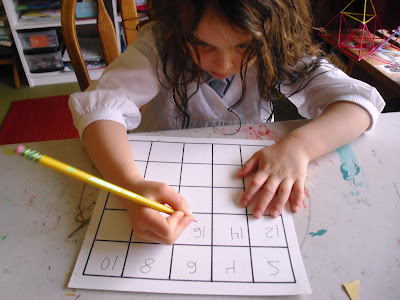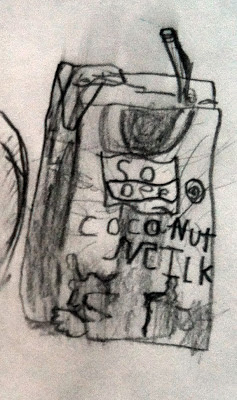What is Math in Your Feet, really?
- Low floor, high ceiling (useful and interesting to diverse groups of learners and backgrounds)
- Geometry topics
- An in depth inquiry into mathematical patterns including explorations of transformations, symmetries, group theory and equivalence classes.
- An opportunity to use mathematical language in context.
- A chance to build and strengthen spatial reasoning, what I call "the step-child of mathematics education".
- A chance to harness existing body knowledge (developed through being in the world) to strengthen understanding of mathematical practices and topics.
- Potential for developing new insights about previously familiar mathematics.
- Inspiration for mathematical question asking in fourth graders and (open-minded) research mathematicians alike.
- A major cognitive schema. The Source-Path-Goal Schema, to be specific. ALL of it.
Yep. A schema is a cognitive framework, essentially a mental frame that helps us organize, sort and classify sensory input into something that makes sense to us. The book Where Mathematics Comes From by Lakoff and Nunez makes a comprehensive argument for how the core schemas identified in cognitive science also come to influence the development of mathematical ideas. Lakoff/Nunez call the source-path-goal schema "ubiquitous in all mathematics" meaning: this is how we need to think when we do mathematics at ANY LEVEL.
We build MiYF dance patterns by asking:"Where are we starting [source] , where are we going [goal], and how are we going to get there [path]?"
During this process we use the following categorical variables to create our patterns which help us think about ___location (foot position) and the body's trajectory (direction), and how exactly we're going to get from point A to point B (movement)
The Source-Path-Goal Schema ("ubiquitous in all mathematics") includes the following:
[Direct quotes are presented in italics here and can be found on p37 of the book.]
A trajector that moves, like these guys:
A source ___location (the starting point):
A goal--that is, an intended destination of the trajector. In this case, both boys are turning left toward their intended destination facing the back of the dance space.
A route from the source to the goal. The route of girl on left is a left turn. The route of the girl on the right is a right turn.
The actual trajectory of motion.
The position of the trajector at that time.
The actual final ___location of the trajector, which may or may not be the intended destination.
In the picture below, the girls have reached their intended position, the front right diagonal of the square:
We had a fantastic time with embodied mathematics at Twitter Math Camp 2014, but on top of being highly engaging it also brought up a really important question among the math educators involved:
What is the role of embodied mathematics in our classrooms?
As we move this question forward together we need to remember that all learners (even adults) need experiences with the processes of math in multiple modes and settings. With these kinds of experiences, including the body-based ones, math learners are well supported to engage in mathematical content in meaningful ways.
Ultimately, in the early years of creating Math in Your Feet I didn't explicitly set out to build the program around the source-path-goal schema but I asked honest questions about what math is and how it's learned. These are the kinds of questions that can put us in a good place to start uncovering the hidden metaphors carried in our bodies. From there it's not too hard to envision the path toward using these ideas in creating meaningful, useful body-based lessons for classroom use.
There's so much more to talk about in relation to this topic, but I'll stop here for now. We have our "source" question. We can see the "path" ahead as well as the "goal". Let's get started! Together.
































